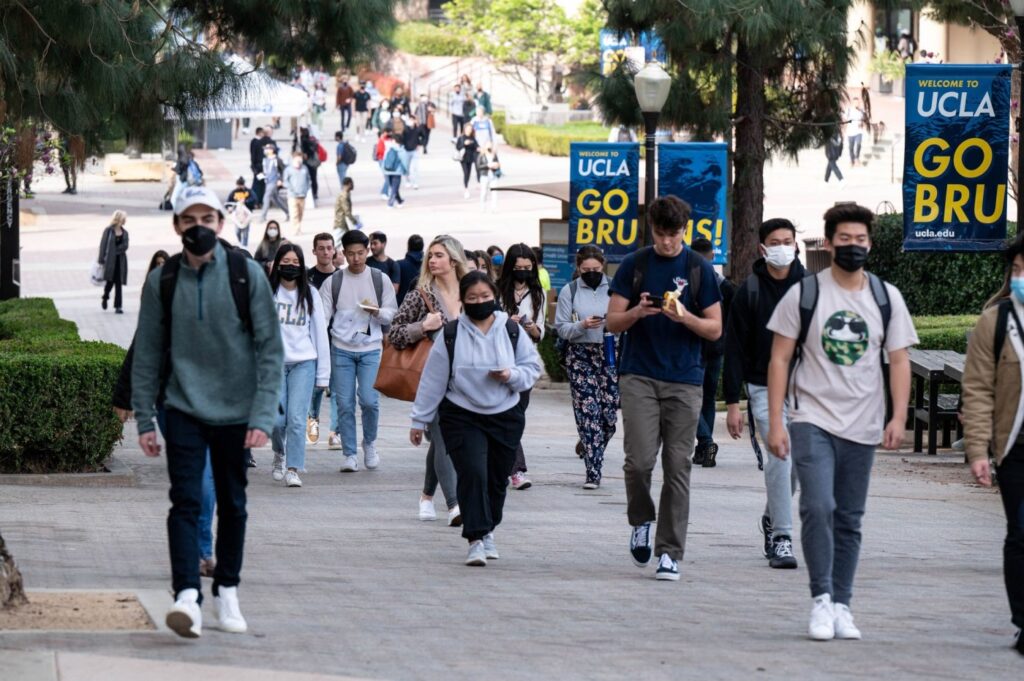
Data on COVID-19 case and death rates indicate that we are entering a “new normal” where infections are not only declining but leading to less deadly results.
The onset of the Omicron variant in early December last year resulted in a sharp spike in cases. On December 1, the 7-day moving average of total cases per day in the nation was 86,000. By January 15 of this year, only 45 days later, that number exploded to 792,000. This number was more than three times higher than the previous peak recorded in January last year of 251,000 cases.
But there is a more critically important difference between the 251,000 peak in daily cases on January 8 last year versus the 792,000 cases on January 15 this year. Back on January 8, the percentage of deaths (20 days later) to cases was 1.30%. That compares to a much lower death percentage of 0.30% one year later when cases peaked at 792,000.
In fact, the percentage of deaths to cases has been plummeting ever since the Omicron variant hit in early December. On December 5, when the first case of Omicron was reported in the U.S., the COVID-19 death percentage was 2.10 percent. As Omicron raged and caseloads skyrocketed after December 5, the death percentage steadily declined to the most recent 0.30%.
To put the 0.30% death rate in perspective, that means the average probability of dying from COVID after being infected is now less than 1 in 300. Back in early 2021, when the death percentage was 1.3%, the probability of dying from COVID was about 4 in 300. Clearly, in spite of the highly contagious character of the Omicron variant, it is much less lethal than earlier stages of the coronavirus.
Any death is a personal tragedy. But the most recent 0.30 COVID death percentage is moving us closer to the death percentage from influenza (the common flu) of 0.14% in 2017-18 (61,000 deaths to 45 million cases) and 0.10% in 2018-19 (34,000 deaths to 35 million cases). This is yet further evidence that the pandemic is becoming more endemic. That means while COVID is not likely to be completely eradicated, it will become more like a seasonal flu.
More good news: Since peaking at 792,000 cases on January 8, the 7-day average caseload has declined rapidly to 263,0000 as of February 7. That points to even fewer COVID deaths in the future.
As we move towards that future, there are other findings that Chapman researchers at the A. Gary Anderson Center for Economic Research have uncovered about the Omicron variant, namely the socioeconomic factors that help explain it. Over the last two years, we have found that those explanatory factors have changed markedly during the two-year trajectory of the COVID-19 pandemic. That research, which was published in the Journal of Bioeconomics, COVID Economics, and the Social Science Research Network, showed that when COVID first hit in early 2020, states with higher density were those hit the hardest. As COVID spread, density became less important to the point where it was no longer a factor. But increasing evidence emerged that governmental interventions — the degree to which states used interventions such as school and workplace closings, size restrictions in public gatherings, travel restrictions, and testing requirements — were increasingly important in reducing COVID-19 case and death rates.
Since July of last year, however, as the Delta and Omicron variants moved COVID-19 into another stage of the pandemic, we found that governmental interventions no longer had any measurable effect in reducing COVID-19 case and death rates. In fact, the only two variables that emerged as having a significant influence on statewide COVID-19 case and death rates since mid-2021 were age and vaccination rates. Those states with a greater proportion of the population over 65 were found to have significantly higher COVID death rates.
Specifically, for every one percent increase in the percentage of people over the age of 65, the COVID deaths since last July increased by about 6 people per 100,000 in population.
But the most important single variable that now explains differences in s state’s COVID death rate is a state’s average vaccination rate. We found that every single percentage point increase in the vaccination rate leads, on average, to a 3.4% decline in death rate (3.4 fewer people dying per 100,000 in a state’s population).
Related Articles
Newsom is right about the death penalty, it should be abolished
A transparent government is a good government
Capitol shrinks transparency and accountability
Tough-on-crime drug criminalization doesn’t work
Protect our 21st-century freedom by enforcing our 18th-century rights
The ten states, for example, with the lowest average vaccination rate of 50.3%, had an average COVID-19 death rate of 22 points higher than other states. At the other end of the spectrum, the ten states with the highest average vaccination rate of 73% had a death rate 31 points lower.
These empirical findings suggest that the single most important thing that can be done to keep moving the pandemic to an endemic is increasing the average vaccination rate. The other lesson we learned is that governmental intervention no longer appears to work. Since they come with high economic as well as social costs, that suggests they should be phased out.
This is especially the case with California, whose governmental intervention, as measured by Oxford University stringency score of 27.9, compares to an average score of 18.5 for the entire nation. At 27.9, California’s stringency score is the 6th highest of all 50 states. That level of governmental intervention comes with great economic cost with no measurable benefit.
James L. Doti is president emeritus and professor of economics at Chapman University.
